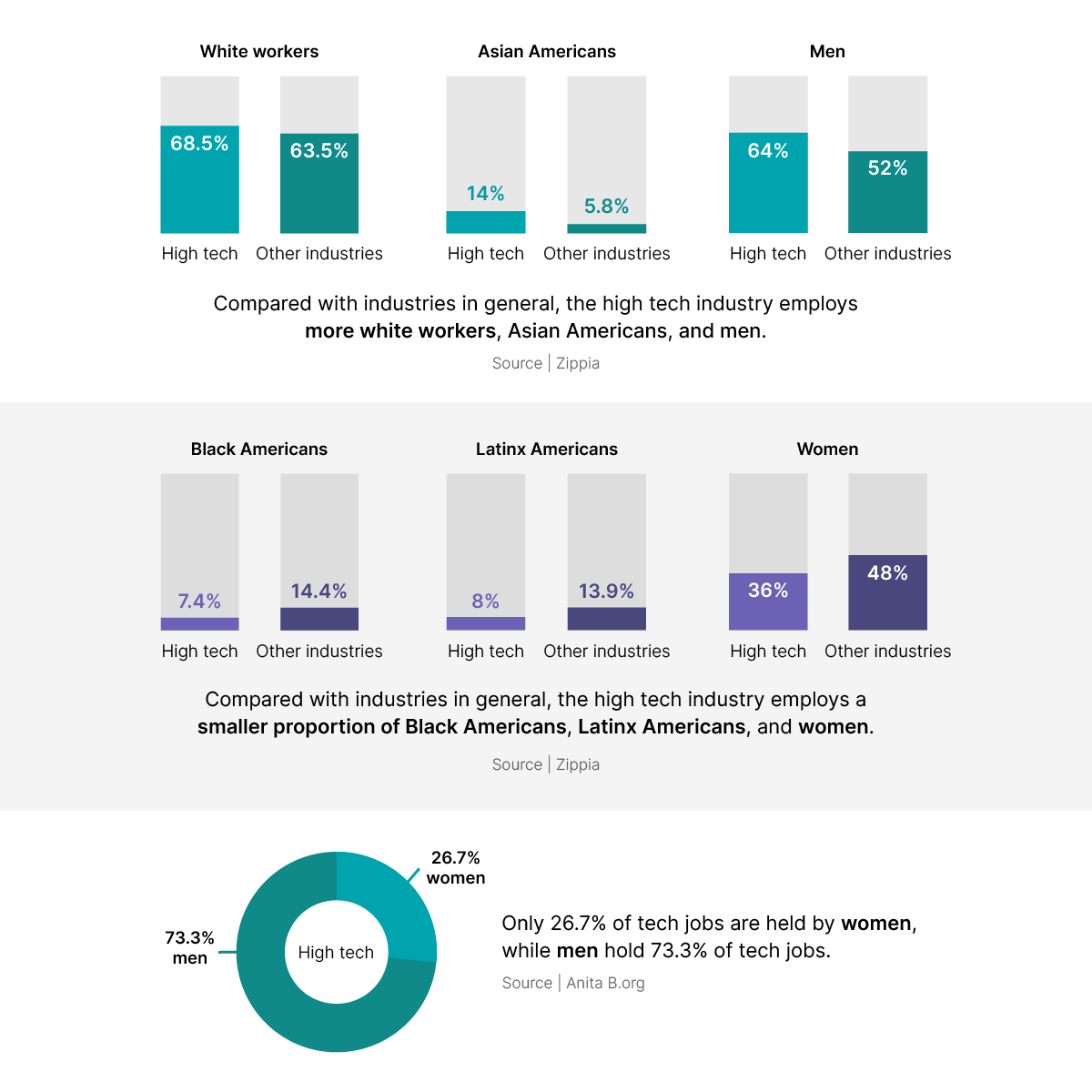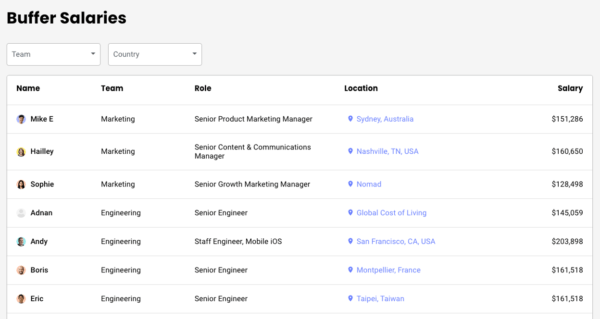The tech industry is often perceived as being progressive and on the leading edge of workplace equity efforts, but our 2023 Workplace Equity Trends Report revealed that many practitioners at tech companies feel that commitments are not backed by real action and progress.
When it comes to creating effective programs that develop diverse teams and talent, tech rated itself more harshly than other industry segments such as healthcare, retail/food service, and education. As a result, tech ranked the lowest out of these key industries, with 59% of HR or DE&I professionals in tech somewhat or strongly agreeing that their organization effectively builds diverse teams at each job level.
Healthcare rated highest at 84%, retail/food service was 76%, and education 75%. One factor that may contribute to this difference in ratings is the fact that sectors such as healthcare and retail tend to employ a large number of frontline employees, groups that tend to be more diverse.
Respondents in technology were also much less likely to agree that their organizations share enough information externally for meaningful public accountability around their workplace goals: 30% agreed vs 59% of all respondents and 75% of respondents in healthcare.
Also raising questions about tech’s commitment to workplace equity is the response so far to new pay transparency requirements in New York and California. A recent study by a new website that tracks the salary ranges at tech companies in California and New York City revealed that while the vast majority of companies are posting salary ranges within a reasonable range, several California tech companies were posting extremely wide pay ranges on job postings.
There’s a lot of work to do
Although efforts are underway, the numbers show that overall progress in tech is minimal. When compared with industries in general, the high-tech industry employs more white workers (68.5% vs. 63.5%), Asian Americans (14% versus 5.8%), and men (64% versus 52%). Looking at shortfalls in diversity, the high-tech industry employs a smaller proportion of Black Americans (7.4% versus 14.4%), Latinx Americans (8% versus 13.9%), and women (36% versus 48%) compared with industries in general. Only 26.7% of tech jobs are held by women, while men hold 73.3% of tech jobs.

Black, Latinx, and female workers are severely under-represented in technology, particularly in leadership. Research from Zippia also shows that men hold 79% of executive positions, and white workers hold 83% of executive positions.
In addition to a lack of diversity, pay inequities have historically been endemic to the industry. A 2021 survey by Hired showed that in tech, men were offered higher salaries than women for the same job title at the same company 59% of the time. On average, the survey found that women were offered salaries 2.5% lower than those given to men for the same roles.
Layoffs in tech may exacerbate inequities
Recent layoffs in the tech industry may cause inequities to arise, as large groups of employees are included in reductions in force (RIFs). More than 90,000 jobs were eliminated from public and private tech companies in 2022, and some experts say that was just a preview. So far in 2023, more than 16,000 workers in U.S.-based tech companies have been laid off.
Unfortunately, even neutral approaches to layoff decisions can impact workplace equity, as we pointed out in a recent post. Approaches such as “last hired, first fired” can set workplace equity efforts back if your organization has only recently begun more diverse hiring or had issues retaining historically disadvantaged groups. There are ways to avoid or mitigate negative impacts, including conducting an adverse impact analysis on both those who would be eliminated and those who remain. Examining how pay equity is affected by any cuts can reduce the chances of creating inequities that will have to be remediated later.
It remains to be seen whether and at what level layoffs will continue in the tech industry in 2023. But with careful analysis of the demographics involved, tech companies could avoid affecting the diversity of their workforce with layoffs.
Some tech companies are leading the way in workplace equity
Salesforce has led the way in pay equity for tech since 2015, when CEO Marc Benioff first took a public stand, taking the company to unprecedented levels of openness around pay equity and building employee trust along the way. The organization’s pay equity efforts have contributed to a number of employer accolades, including the fact that 90% of employees at Salesforce say it is a great place to work, compared to 57% at a typical U.S.-based company.
Microsoft’s newly released 2022 D&I report included additional levels of transparency, both in terms of workforce representation and pay. The company expanded their pay equity data, broadening it to include total pay and global pay, and added the median unadjusted pay, or pay gap.
Social media marketing and monitoring platform Buffer is at the extreme end of the pay transparency trend, offering a page on their website that lists the salary of every position, searchable by team and country. Not many organizations are willing to share this level of detail — yet. But the fact that their retention rate is 94% is certainly a good argument for their approach.

A report on Top Companies for Women Technologists by the AnitaB.org listed winners in small, medium and large technical workforce categories, including Yelp, Airbnb, Experian, Amazon, and Cisco, among many others. However, the report did note decreased representation of technical women at most career levels in 2021. After climbing each year since March 2018, representation for entry- and senior-level women in January 2021 was at its lowest level since March 2019.
Playing catch-up or setting a high bar?
We were surprised to see survey respondents in technology — a sector characterized by numerous commitments to improving racial and gender diversity — rate their organizations so harshly when it comes to building diverse teams at all levels and communicating their DE&I data in a way that supports meaningful public accountability. This may also reflect how much further technology has to come than other sectors, with historical gatekeeping keeping historically disadvantaged groups like women, people of color, and people with disabilities out of this lucrative sector.
Ironically, technology is key to the tech industry’s need to accelerate its diversity efforts. Workplace equity technology such as the platform that Syndio offers, with pay equity and opportunity equity solutions, can help tech companies make real progress faster with real-time data analysis, insight into root causes of disparities, and setting data-driven goals.
Get our latest Workplace Equity Trends Report to stay up-to-date on the latest trends.



